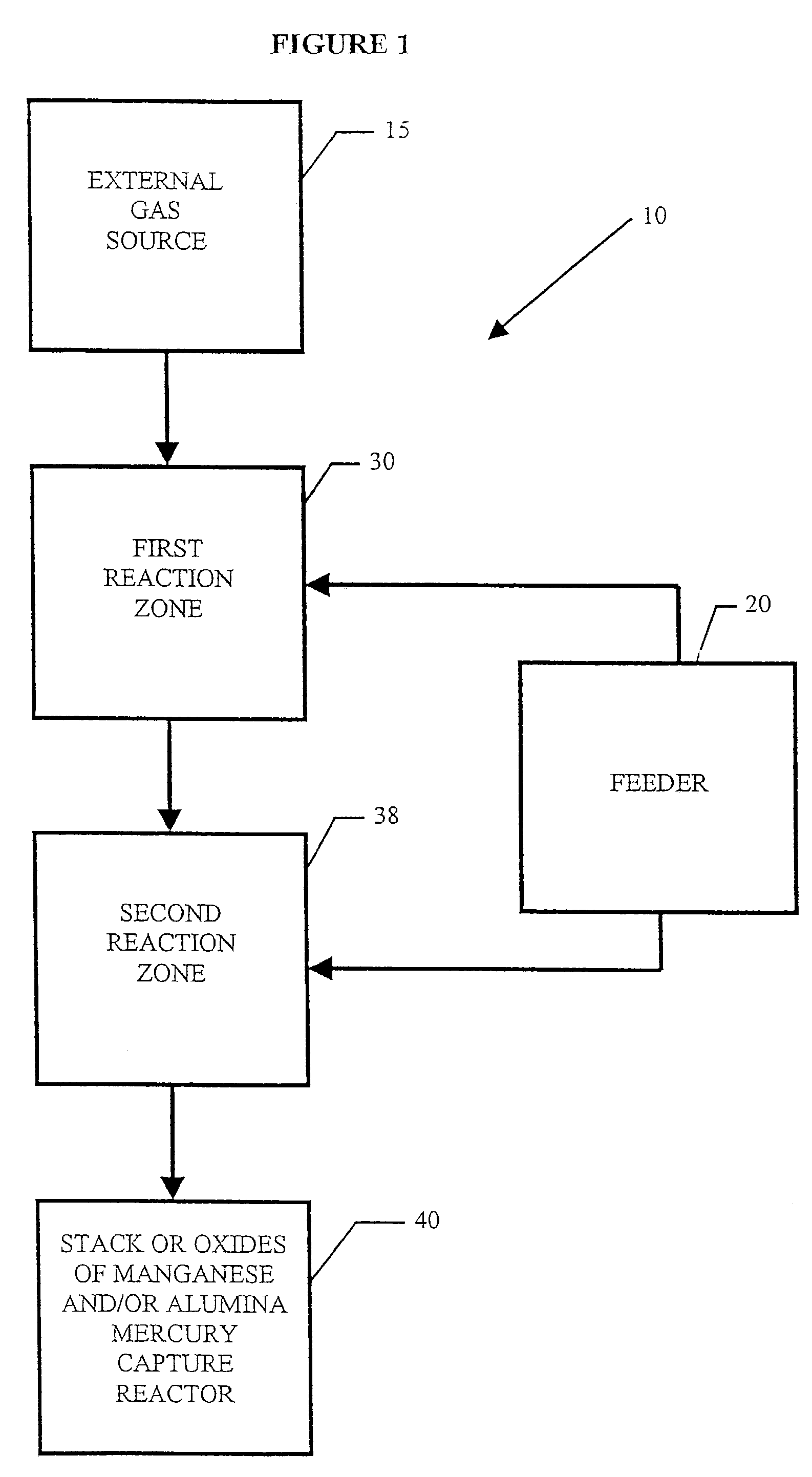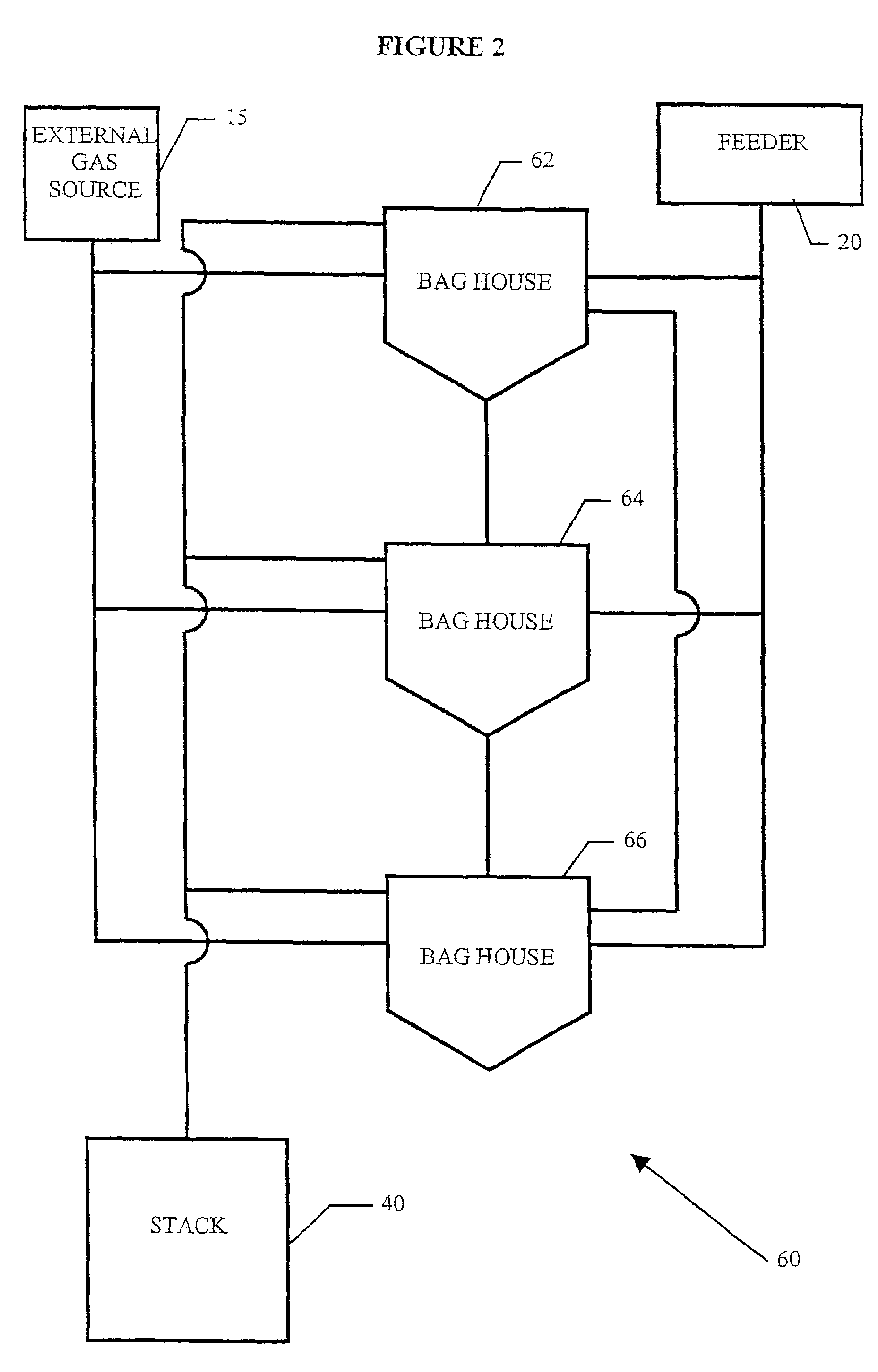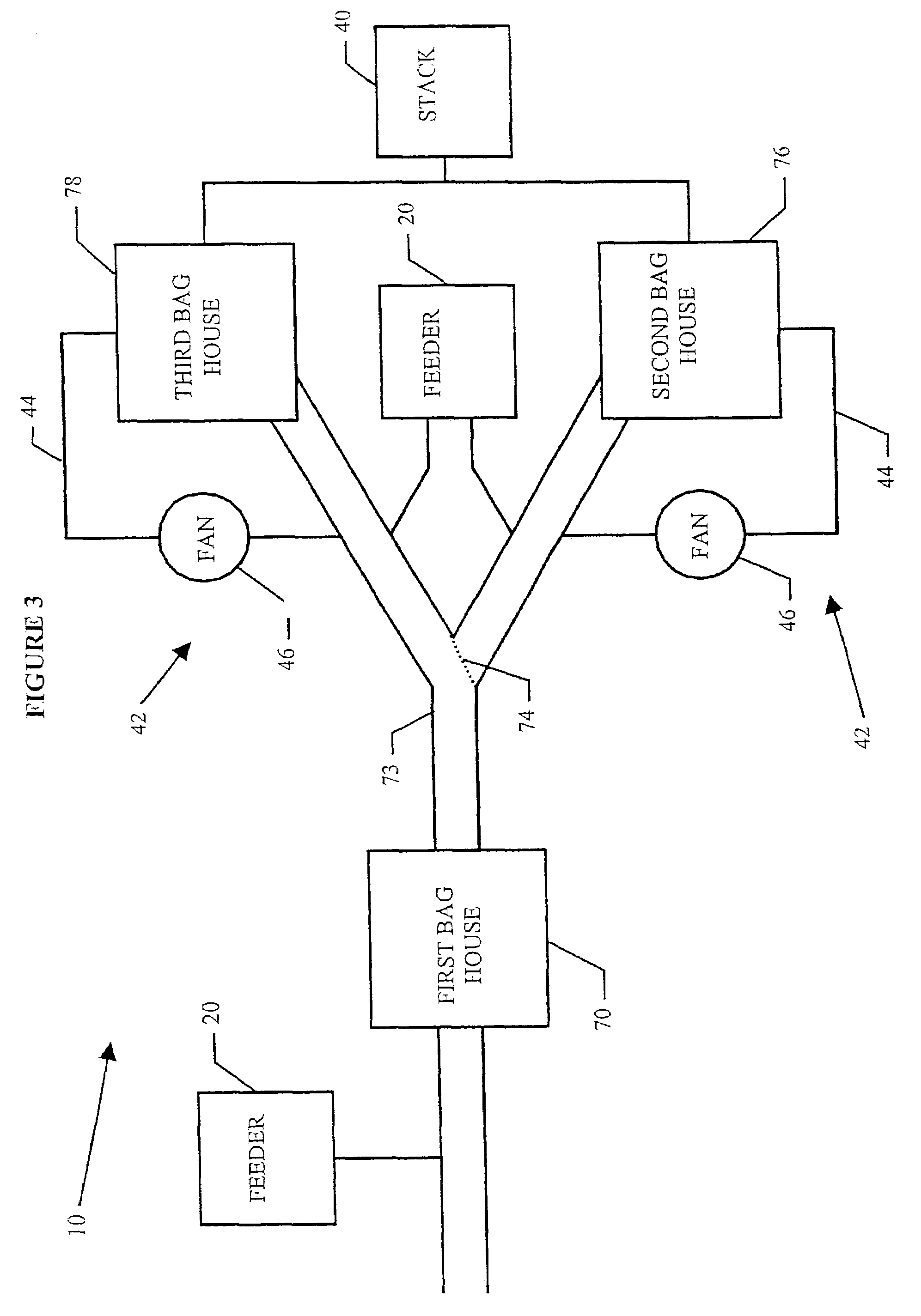System for removal of pollutants from a gas stream
a technology for gas stream pollution and system, applied in the direction of machines/engines, process and machine control, metal/metal-oxide/metal-hydroxide catalysts, etc., can solve the problems of difficult removal of nitrogen oxides, limited reduction of cost, and limited reduction of pollutants
- Summary
- Abstract
- Description
- Claims
- Application Information
AI Technical Summary
Benefits of technology
Problems solved by technology
Method used
Image
Examples
example 1
[0160]NOX concentrations were determined using EPA method 7E, chemiluminesent analysis method, and analyzed with a model 42H chemiluminescent instrument manufactured by Thermo Electron Inc. Sulfur dioxide (SO2) concentrations were measured utilizing, a spectrophotometric analysis method employing a Bovar Western Research Spectrophotometric model 921NMP instrument. In order to obtain accurate and reliable emission concentrations, sampling and reporting was conducted in accordance with US EPA Reference CFR 40, Part 60, Appendix A, Method 6C. Gas flow rates in standard cubic feet per minute (scfm) were measured using AGA method #3, utilizing a standard orifice plate meter run. The demonstration was conducted utilizing a series of test runs on live gas streams from a power plant. Said power plant operates steam boilers which are fired on high sulfur coal. During test runs, NOX and SO2 concentration readings were taken continuously alternating from the inlet and the outlet of the demonst...
example 2
[0162]A test using the demonstration unit according to the invention, utilizing oxides of manganese as the metal oxide sorbent was conducted on a simulated gas stream containing varying levels of NOX. Oxides of manganese powders that were used during this test described generally by 60% of particles less than 45 microns in size and having a BET surface area of approximately 30 m2 / g. Knowing that there is a competition for reaction sites between SO2 and NOX, a series of tests was conducted to gather data on the efficiency of NOX capture in the absence of SO2. Synthetic NOX gas was made on site by use of high-concentration bottle gas which was diluted into the inlet gas stream and processed by the demonstration unit. The bag house was pre-loaded with oxides of manganese prior to introduction of test gas by operating the demonstration unit's blower at high speed (typically about 1200 scfm), and feeding the oxides of manganese into the gas stream at a high rate (between 40% and 90% of f...
example 3
[0165]A further test of the demonstration unit according to the invention utilizing oxides of manganese as the metal oxide sorbent, was conducted on a live exhaust gas slipstream from a 170 MW coal fired boiler. The boiler was operating on high sulfur coal of approximately 4-6% sulfur, resulting in emission concentrations of SO2 in the range of 1200-2000 ppm and NOX concentrations in the range of 280-320 ppm. A slipstream averaging 1000 scfm was diverted from the main stack exhaust and routed to the demonstration unit for reaction and sorption by the sorbent oxides of manganese. SO2 and NOX concentrations were measured at the scrubber inlet and outlet of the bag house on an alternating basis throughout the testing with the demonstration unit's continuous emissions monitoring system (CEMS). SO2 concentrations were measured utliizing a Bovar Western Research model 921NMP spectrophotometric analyzer and NOX concentrations were measured utilizing a Thermo Electron model 42H chemilumines...
PUM
| Property | Measurement | Unit |
|---|---|---|
| Length | aaaaa | aaaaa |
| Specific surface area | aaaaa | aaaaa |
| Fraction | aaaaa | aaaaa |
Abstract
Description
Claims
Application Information
 Login to View More
Login to View More - R&D
- Intellectual Property
- Life Sciences
- Materials
- Tech Scout
- Unparalleled Data Quality
- Higher Quality Content
- 60% Fewer Hallucinations
Browse by: Latest US Patents, China's latest patents, Technical Efficacy Thesaurus, Application Domain, Technology Topic, Popular Technical Reports.
© 2025 PatSnap. All rights reserved.Legal|Privacy policy|Modern Slavery Act Transparency Statement|Sitemap|About US| Contact US: help@patsnap.com



